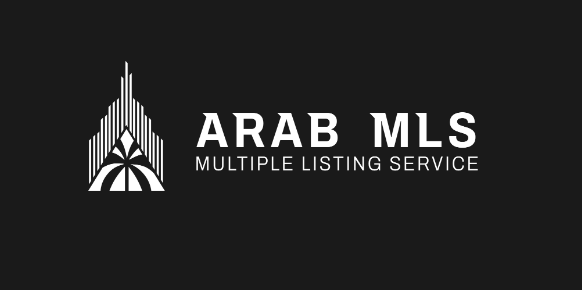As real estate markets evolve and technology advances, the platforms that support property listings, transactions, and client engagement must also keep up. One of the key architectural innovations driving modern Multiple Listing Services (MLS) is Modular Platform Design.
This design approach allows MLS platforms to remain flexible, scalable, and adaptable to both user needs and future changes in the industry. In a field where no two markets or agents are exactly alike, modularity is proving to be a game changer.
This article explores what modular platform design means for MLS systems, how it works, and why it matters in today’s data-driven real estate environment.
What Is Modular Platform Design?
Modular platform design is a software architecture approach that breaks a system down into independent but connected components — known as modules. Each module handles a specific function and can be developed, deployed, and updated without affecting the rest of the system.
Think of it like building with LEGO blocks. Each piece has a clear purpose, and when connected, they form a complete structure. However, if one block needs to be changed or upgraded, it can be removed and replaced without dismantling the entire structure.
In MLS terms, a modular system might separate core functions such as listing input, search, user authentication, mapping, analytics, digital asset management, and syndication into standalone modules. These modules communicate with each other through defined interfaces but can evolve independently.
Why Modularity Matters in MLS Platforms
MLS platforms serve a wide range of users — from agents and brokers to buyers, sellers, and tech vendors. These users rely on a complex combination of tools and services to manage listings, communicate, analyze data, and close deals. A rigid, monolithic system can’t keep up with the diversity of these needs.
Modular platform design offers several key advantages:
Customization

Different MLSs operate under different rules, serve different markets, and may offer different services. A modular platform allows customization at the module level. An MLS in a large urban area might use an advanced search module with mapping and predictive analytics, while a smaller MLS may opt for a simpler version.
Scalability
As user demands grow or new technologies emerge, MLSs can expand specific modules without rebuilding the entire system. For example, they can add a new analytics module or upgrade the media management system without affecting other operations.
Flexibility
MLS platforms must integrate with third-party software like CRMs, virtual tour tools, or marketing automation platforms. Modular design makes these integrations easier, as new APIs or connectors can be added to specific modules without overhauling the system.
Faster Development and Deployment
Developers can work on individual modules in parallel, allowing faster updates and improvements. If one module has a bug or security issue, it can be fixed and redeployed independently.
Cost Efficiency
Modular systems can be built incrementally. This allows MLSs to invest in only the features they need and scale up over time. It also lowers long-term maintenance costs, since individual modules can be upgraded without replacing the entire platform.
How MLS Platforms Use Modular Design
Let’s explore how modular design works in practice. Here are some of the most common modules in a modern MLS platform:
Listing Management
This module allows agents and brokers to enter and edit property listings. It includes tools for adding descriptions, setting prices, selecting categories, and managing listing statuses.
Search Engine
The search module handles property queries from users. It includes filters, maps, saved searches, and listing alerts. Advanced versions use AI or machine learning to suggest listings based on user behavior.
Authentication and User Roles
This module manages user accounts, permissions, and security. It ensures that agents, brokers, administrators, and public users have access only to the parts of the system they’re authorized to use.
Digital Asset Management
A separate module stores and organizes listing photos, videos, floor plans, and virtual tours. It can include features for resizing, watermarking, and rights management.
Data Syndication
This module distributes listing data and media to third-party websites, mobile apps, and portals. It ensures that data is properly formatted and updated across all platforms.
Analytics and Reporting
Real estate professionals need insights. This module provides reporting dashboards, market trends, and performance metrics. It may also offer custom reports for brokers or MLS administrators.
APIs and Integration Tools
This module allows external developers and partners to connect to the MLS system securely. It’s key for integrating third-party tools like transaction management, e-signature platforms, and IDX websites.
Each of these modules performs a specific function and communicates with others through standard protocols or APIs. The result is a robust, responsive MLS platform that can adapt to almost any operational need.
Benefits for MLS Providers and Users
Modular design benefits both the organizations that run MLS systems and the users who rely on them daily. For MLS operators, it provides control and efficiency. They can monitor performance, detect issues quickly, and respond to user feedback by improving individual modules.
For agents and brokers, modular platforms result in more stable, intuitive, and personalized experiences. For example, one agent may use a full suite of MLS tools, while another may prefer to connect their own CRM or digital marketing tool. A modular system allows both users to work comfortably within the same platform.
Also, when new features are introduced — such as AI-powered lead scoring or blockchain-based transaction tracking — they can be added as standalone modules without interrupting the main workflow.
Challenges and Considerations
While modular design brings many advantages, it also introduces complexity behind the scenes. For a modular MLS to work smoothly:
- Each module must be well-documented and built using clear standards.
- Communication between modules must be reliable and secure.
- Updates must be managed carefully to avoid compatibility issues.
- Data consistency across modules must be maintained, especially when multiple vendors or teams are involved.
This requires good system governance, experienced developers, and ongoing quality control. Fortunately, many MLS technology vendors have adopted best practices that make modular development more manageable and sustainable.
Real-World Example of Modularity in MLS
Some of the largest MLSs in North America, such as Bright MLS and CRMLS, have already embraced modular architecture. They often partner with multiple vendors, each specializing in different functions like search, mobile apps, or client collaboration. This mix-and-match approach enables them to build a high-performance, customizable platform that meets diverse member needs.
Additionally, platforms like RESO Web API and RESO Data Dictionary (standards set by the Real Estate Standards Organization) support modularity by defining how different components should interact. This ensures that even when modules are built by different companies, they can still work together.
The Future of Modular MLS Platforms
As the real estate tech ecosystem grows, modularity will become even more important. Innovations in AI, automation, and virtual experiences are happening rapidly. Modular MLS platforms can plug these innovations in as needed, without waiting for a full system upgrade.
In the coming years, we may see MLS platforms offering optional AI modules that help agents write listing descriptions, chatbot modules for consumer engagement, or blockchain modules for transaction verification. The possibilities are vast, and modular design makes them possible.
This also opens doors to greater personalization. An MLS in one region might use certain modules for specific property types (such as luxury homes or commercial spaces), while others focus on speed, mobile use, or investor tools.
Conclusion
Modular platform design is reshaping the future of MLS technology. By organizing software into independent yet connected components, MLS providers gain the flexibility, scalability, and innovation needed to serve today’s diverse real estate market.
Whether you’re a broker looking for more tailored tools, a developer building MLS software, or an MLS organization preparing for the next decade, modularity offers a smart, future-proof solution. It allows you to adapt as technology evolves — without sacrificing stability or user experience.













